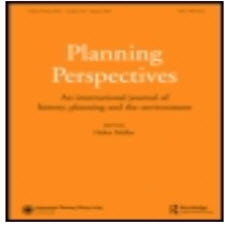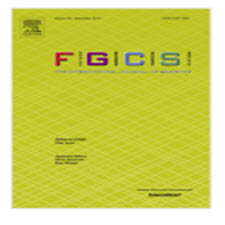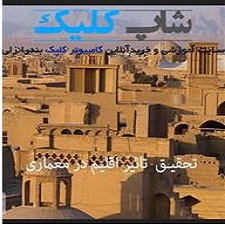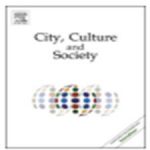توضیحات
ABSTRACT
This is a study in the practice of postwar urban design in Toronto, Canada, based on archival documents and interviews with participants. The narrative begins with the hiring of one British-trained architect/urban designer, Raymond Spaxman, by the City of Toronto Planning Board in 1966. Spaxman then set up a new division of staff that he filled with five or six other architect/urban designers of various national and institutional origins. The study describes the work carried out by these urban designers, identifies the principle themes apparent in it, and relates this to published literature on the founding principles of postwar urban design. In most ways, the study’s findings fit the current understanding of the early discipline – concern for pedestrians, sympathy for historical preservation – but in others not – it was different from but not antagonistic towards planning. The findings are then considered as an example of the international transfer of postwar planning ideas. The process of idea transfer in this case looks to have been more chaotic, and less definable, than existing paradigms suggest, but this might have been fairly common in second-rank, immigrant-receiving cities.
INTRODUCTION
The definition of urban design, one leading analyst has written, remains ‘elusive’,1 an observation one must bear in mind when exploring the profession’s history. The central cause of this surely is its relationship to urban planning, and to some extent architecture, with both of which it shares certain elements while also being fundamentally distinct. Some have gone so far as to characterize urban design not as a discrete discipline but simply as a ‘way of thinking’ that can inform the practice of architecture or planning,2 an appealing compromise that obviates the need for a precise definition; yet something as amorphous as a ‘way of thinking’ rarely forms the basis for concrete things like university programmes, scholarly journals, or professional associations – which urban design does. Then there is the complication of when the profession emerged: some of what is now considered urban design was in fact being done, right through to the early twentieth century, by practitioners we call early urban planners. ‘Elusive’ does indeed seem to be the right word.
چکیده
این مطالعه در عمل طراحی شهری پس از جنگ در تورنتو، کانادا، بر اساس اسناد آرشیوی و مصاحبه با شرکت کنندگان است. این روایت با استخدام یکی از طراحان معماری / شهری بریتانیایی، ریموند اسپکسمن، توسط شورای برنامه ریزی شهر تورنتو در سال 1966 شروع می شود. سپس Spaxman یک بخش جدید از کارکنان را که توسط پنج یا شش طراح دیگر معماری / شهری از ریشه های مختلف ملی و نهادی. این پژوهش کارهای انجام شده توسط این طراحان شهری را توصیف می کند، موضوعات اصلی را در آن مشخص می کند و این را به ادبیات منتشر شده در مورد اصول پایه طراحی شهری پس از جنگ اشاره می کند. در بیشتر موارد، یافته های این پژوهش در درک فعلی رشته های اولیه – نگرانی برای عابران پیاده، همدردی برای حفظ تاریخ است – اما در دیگران نه – آن را متفاوت بود اما نه ضد نفس در جهت برنامه ریزی. سپس یافته ها به عنوان نمونه ای از انتقال بین المللی ایده های برنامه ریزی پس از جنگ در نظر گرفته می شود. فرایند انتقال ایده در این مورد به نظر می رسد که هرج و مرج تر و کمتر قابل تعریف باشد، از پارادایم های موجود نشان می دهد، اما این ممکن است در رتبه دوم رتبه ها، شهرهای دریافت کننده مهاجر معمول باشد.
مقدمه
تعریف طراحی شهری، یکی از تحلیلگران برجسته، نوشته شده است، باقی مانده است “گریز”، 1 مشاهدات است که باید در هنگام کاوش در تاریخ حرفه را در نظر داشته باشید. علت اصلی این قطعا ارتباط آن با برنامه ریزی شهری و معماری با معماری خاص است که هر دو از آن عناصر خاصی دارند و در عین حال اساسا مجزا هستند. بعضی از آنها تا کنون رشته طراحی شهری را نه به عنوان یک رشته گسسته، بلکه صرفا به عنوان یک روش تفکر که می تواند معماری یا برنامه ریزی را اطلاع دهد، 2 یک ساز و کار جذاب که نیاز به تعریف دقیق را از بین می برد؛ با این حال، چیزی به عنوان نوعی تفکر غیرمعمول به ندرت مبنایی برای چیزهای مشخص مانند برنامه های دانشگاهی، مجلات علمی یا انجمن های حرفه ای است که طراحی شهری آن را تشکیل می دهد. سپس عواقب ناشی از این حرفه ظهور می کند: بعضی از آنچه در حال حاضر در نظر گرفته می شود طراحی شهری در واقع انجام می شود، درست از طریق قرن بیستم، توسط تمرینکنندگان ما به نام برنامه ریزان شهری اولیه. در واقع به نظر می رسد “انحرافی” کلمه درست است.
Year: 2018
Publisher : ROUTLEDGE
By : Richard White
File Information: English Language/ 21 Page / size: 2.71 MB
سال : 1396
ناشر : ROUTLEDGE
کاری از : ریچارد سفید
اطلاعات فایل : زبان انگلیسی / 21 صفحه / حجم : MB 2.71






![DAMAGE DETECTION OF STRUCTURES UNDER EARTHQUAKE[taliem.ir]](https://taliem.ir/wp-content/uploads/DAMAGE-DETECTION-OF-STRUCTURES-UNDER-EARTHQUAKEtaliem.ir_.jpg)



نقد و بررسیها
هنوز بررسیای ثبت نشده است.